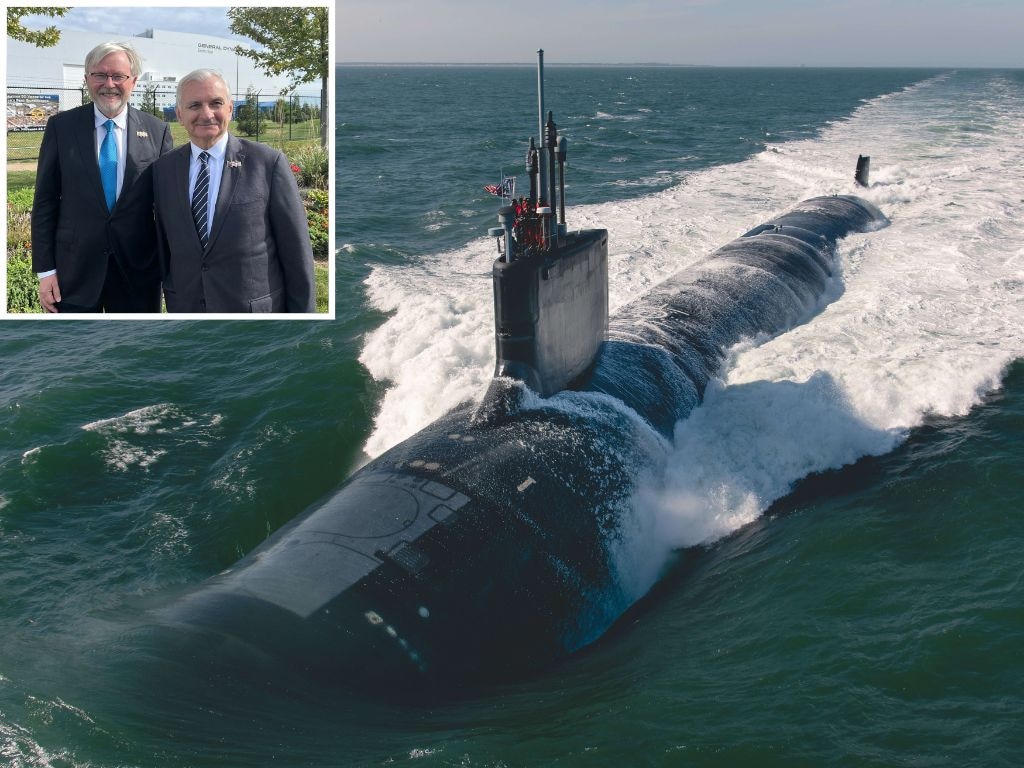Australia strikes $7bn US deal to bolster its missile and air defence
The agreement unveiled by Pat Conroy in Washington will revolutionalise Australia’s defence system to counter China’s recent investments in anti-ship ballistic missile technologies.

Australia will spend $7bn over the decade to revolutionise its air and missile defence systems under a new agreement with the United States aimed at countering China’s recent investments in anti-ship ballistic missile technologies while strengthening deterrence in the Indo-Pacific.
Defence Industry Minister Pat Conroy made the announcement overnight on Monday (AEDT) at the Australian embassy in Washington DC after stopovers in the UK and Belgium, declaring it represented a “revolutionary” step up in Australia’s defence capability.
Under the new arrangement – already approved by Congress – Australia will acquire the Standard Missile 2 Block IIIC (SM2 IIIC) and Standard Missile-6 (SM-6) to boost the long-range capability of the Navy’s surface combatant fleet.
The Australian government says the new missile acquisitions will hand the nation some of the most advanced air and missile defence weapons in the world. The plan is for the new missiles to be deployed progressively across the Navy’s three Hobart class destroyers and planned six Hunter class frigates.
However, no time line has been given for when the new missiles will be deployed on Australian warships with Mr Conroy saying he could not do so for “operational reasons.”
“Australia is facing the most contested geostrategic environment since the Second World War. Our relationships with allies and partners are critical,” he said. “In Washington DC, I’m meeting with US officials and industry leaders to progress efforts to strengthen our relationship and deepen our collaboration on the defence industry.”
“This is a $7bn investment in protecting Australia against modern and evolving missile threats,” he said. “These are state of the art long range missiles. In fact, they are the best air defence missiles in the world.”

Mr Conroy said Australia was the first country other than the United States to test fire an SM-6 missile, “underscoring the strength of our relationship,” and argued the new missiles would give the Australian Navy the “increased lethality the government has promised.”
Last year’s Defence Strategic Review that Australia nation could no longer rely on its remoteness for protection, and that the ADF needed to be “urgently” provided with a “layered air and missile defence capability”.
It said the ADF must have the capacity to “deter through denial any adversary’s attempt to project power against Australia through our northern approaches.”
Mr Conroy said Australia had already “briefed countries in our region about what was in the National Defence Strategy”, arguing that “people were expecting this announcement.”
Currently, the Royal Australian Navy has two missiles available to it including the Evolved Sea Sparrow (ESSM) – a short range missile that can defend against incoming missiles and aircraft. The ESSM is used by the ANZAC-class frigates.
The three Hobart-class air warfare destroyers also use the ESSM along with an earlier version of the SM-2 missile
Mr Conroy explained the new SM-2 IIIC missiles would give the nation a stronger capability because they had “a thing called active seeker.”
“So earlier versions of these missiles, what happens is, you’ll have a radar on a ship. It’ll detect an incoming missile. It will fire a missile, and the radar on the ship will guide that missile to hit the other missile and destroy it,” he told The Australian. “If the missile’s got active seeker … it can either be guided in to destroy that other missile by the radar on a ship, or if, for whatever reason, the ship loses contact with the missile, it can use its active seeker to detect it itself and kill it. So it’s got its own radar.”

He also said the SM-6 was “really revolutionary” because it was a long-range air defence missile with the ability to hit targets a lot further out. “Obviously, if you hit them a lot further out, the safer you are,” he said.
“Secondly, it can also be used as an anti-ship missile. So instead of defending against planes and missiles, it can be fired to hit other ships. And thirdly, it can actually defeat ballistic missiles.”
While most missiles that are launched to hit ships drop down and fly across the surface with a range of couple of hundred kilometres, ballistic missiles can go into space and have a much higher, longer range of thousands of kilometres.
Beijing has ramped up its investments in anti-ship ballistic missiles arsenal, with the Centre for Strategic and International Studies in Washington DC noting a few years ago that Beijing had up to 1,500 short-range ASBMs, up to 250 medium range ASBMs and up to 160 long range ASBMs.
Defence Minister Richard Marles said the acquisition was an example of the Albanese government “accelerating the acquisition of critical capabilities for the Australian Defence Force and enhancing the lethality of Navy’s surface combatant fleet.”






To join the conversation, please log in. Don't have an account? Register
Join the conversation, you are commenting as Logout